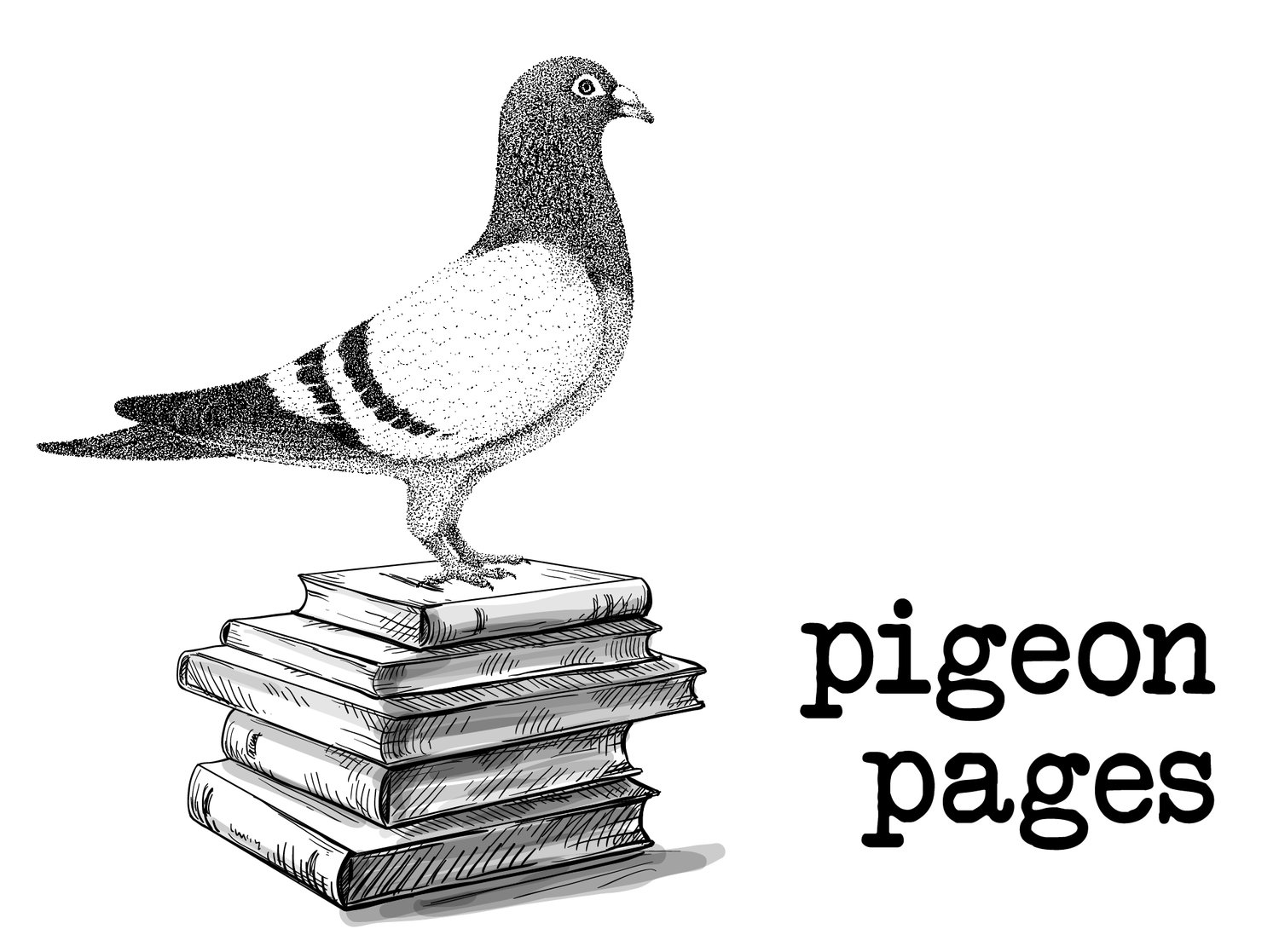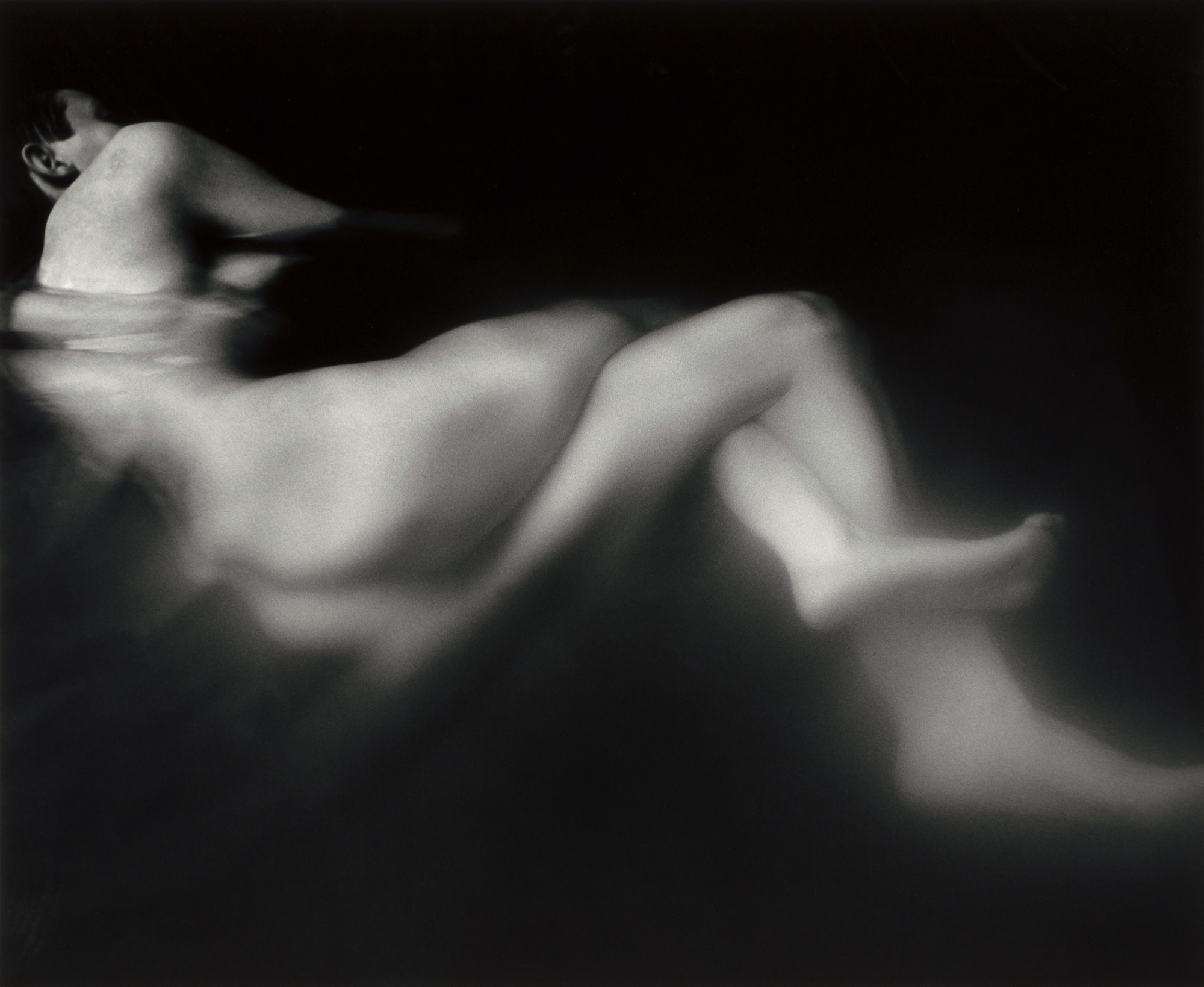Connie Imboden, Dead Silences, 1988, gelatin silver print, Smithsonian American Art Museum, © 1988, Connie Imboden, Gift of the artist, 1991.16
Gaudi Under Water
by Melissa Wiley
God lives underwater with Antoni Gaudi, not in the sky as people think. The sky is empty, whereas water is full. The sky evaporates into nothing, while even the eruption of volcanoes sounds silent in the sea’s embrace. When Gaudi was still alive he lived above the water in Barcelona, where he tried to make an ocean from the air with his architecture. He cut clamshells into stone, converted angular buttresses into sea anemones. He made the walls of his buildings curve as if they were tidal waves being pulled by the moon.
Growing up, I was told that God dwelled in the air, which was the opposite of the land where I lived with the water always smoothing its edges. In a rural Indiana hinterland, my dad attended Sunday school before each church service. His cinder block classroom sat near the water fountain in Mount Gilead Baptist Church’s basement. This fountain’s stream ran weak and thin, but my dad slurped at it with greed before sitting in the back row of his class, where a man with a long, dark ponytail fulminated on the tanking price of soybeans and Judas’ betrayal of Jesus.
The home in which I grew up had only a single bathtub without a shower, so every evening I took a bath. I sat among my own dead skin cells while a film of soap turned the water milky. My mom taught me to look for the cleanest part of everyone and believe that was their essence. She never drank the water flowing from the sink on our back porch as my dad did. The sink’s spout dispensed a white and plunging rapid, and my dad filled his red water jug there every morning before he began his day of farming. It was water only the thirsty could stomach, tasting hard of iron and calcium.
The main difference between my parents was that one was thirsty and the other wasn’t. One drank water from every faucet available to him, consuming what must have been almost an ocean throughout his lifetime, while the other quaffed only soft drinks filled with carbonation. I have always been my father’s daughter, if only because I, too, am thirsty always.
In Barcelona, my husband and I drank pink champagne from shallow cups made of plastic. As we walked toward the beach near sunset, I bought two teal bracelets hanging from an umbrella studded with metal hooks. The salesman collapsed the umbrella whenever the police walked past him, strolling in a casual ellipse while carrying all of his merchandise at his side. When I approached him, the umbrella sat open on the boardwalk, however. Were the clouds to suddenly darken and pour down their liquid, the holes he had pierced to display his inventory would filter the heaviest rains into a gentler effluence.
The only rain that fell during our seven days inside the city was on the morning we arrived. Sleepless for nearly twenty-four hours, I folded myself onto a park bench while we waited for our room to be rid of all evidence of another couple’s lovemaking. It was Sunday morning, and a parade of endless joggers and cyclists kept staring down at me as I made a pillow of my jacket, leaving my husband to walk alone to the art museum and Olympic Stadium beyond. The light precipitation that was falling kept me awake without slaking my thirst, without rinsing me clean from our journey across the ocean.
The next morning, we took the bus to Park Güell after breakfast. The park’s tilted arches and spiraling pathways mimicked the growth of the trees and ferns encompassed within. Though the hour was still early, hundreds upon hundreds of tourists suffocated Gaudi’s lizard at the park’s entrance, jockeying for space for photos of themselves standing next to its ceramic skin. The lizard’s mouth hangs open, revealing its missing tongue. Of all creation, reptiles and amphibians alone know what it means to crawl from water onto land, to permanently forsake wetness for dryness, to thirst for one while evolving in the opposite direction. They are fish who have left the sea’s holiness to gasp for oxygen with gills dried to nothingness. Gaudi, perhaps alone among architects, understood this desire for air may have been a mistake. He might have kept his distance from Barcelona’s wine and women, from its profusion of outdoor cafés and markets, because he felt there was still good reason to crawl back into the sea despite our lungs’ love of open spaces. Throughout his years spent imbuing the air with the sea’s wisdom, he slept alone in a twin bed, in a house high on a hill isolated from the rest of the city.
My mother raised me Catholic. The problem with a Baptist baptism, my mom once told me in private, was that they dunked you underwater amid the flow of a river’s current. They didn’t sprinkle your forehead with chlorinated water in a marble baptistery the way Catholics did. Even babies in my dad’s church had to hold their breath a moment, to share a few stifled breaths with the seaweed and snails and other fish sculling below its surface. My mom wriggled her nose, and I wriggled mine back, agreeing this would not be pleasant. God, it went without saying, had designed us for a dry existence, and my mom always kept our supply of plush pink towels folded.
In the Sagrada Familia, Barcelona’s largest basilica as well as its most resplendent, Gaudi transformed Gothic arches into splintered tree limbs, cornerstones into arboreal knots. Its blue and gold light suffuses a vaulted stone forest, though scaffolding blocked much of its exterior as we waited in line for tickets. Calling himself God’s architect, Gaudi tried to make life above the water easier to withstand for those who would rather live beneath its waves, in its deeper silence. When my husband and I visited this, his magnum opus, we noticed a man who sat across the street from the basilica with a horse mask over his head, his dusky coat and shirt collar starched into defiance. He was waiting to play his accordion for paying tourists. In the small park behind him, boys wearing sock hats were playing football in the interim, shaking their heads, their shoulders becoming weapons as they tossed the ball between the chains of swing sets. When my husband and I drank white wine in a nearby café a little later, I had to ask the waiter several times for water. He must have assumed someone drinking wine would not be thirsty.
Connie Imboden, Untitled (figure in water), 1988, Smithsonian American Art Museum, © 1988, Connie Imboden, Museum purchase, 1991.52.1
In my family’s farmhouse, the water pouring from all the faucets came from a well, though one that stayed invisible to me as a child. Both of my parents told me at different times of its existence, but I could never find a stone circle with a bucket hanging overhead, as a well always looked in my imagination. There was water in the ground regardless. Beneath our pastures, a flowing liquid substrate persisted, water I could never see but that I might dissolve into all the same were the earth to only soften.
The closest I ever came to finding our source of water was when walking toward the creek that ran beneath the bridge overlaying our driveway. A couple of miles from our farm, the creek flowed into a river where my dad occasionally picked wildflowers for our kitchen table during summer. The flowers smelled of cool, green mud, and their pistils hid wingless insects. However delighted she pretended to be by the sight of them, my mom never kept these flowers for more than a day. Pulled from the riverbed, the flowers began wilting within hours. The bugs escaped onto our place settings and made small mountains of our spoons.
Our water, my mom often lamented, was the reason my hair rusted like a bicycle in the rain. My hair was becoming brassier by the day, she would say as she brushed it for me. Had our water come from someplace besides the well, it would have tasted differently and not dyed my hair the colors of a flaming sunset. Had it flowed from another wellspring, we would also likely not have thirsted for this vast underbelly of water that I could never witness and still inflated our cells ripe to bursting. We would not have known God as we did, even though at the time we still sent our prayers skyward, in the wrong direction.
At the foot of the altar inside the Catholic church where my mom took me to help keep me pure of body and spirit, I drank the grape juice that the priest turned into the blood of Jesus. For years, I believed it was the blood he claimed it to be despite the fact that it didn’t taste like the scarlet liquid I sometimes put to my tongue whenever I split the thoraxes of spiders I found crawling along our window ledges. My mom told me to sip, not drink, from the chalice. Secretly I wondered if some part of Jesus would later filter through my urine, but I knew not to ask. I knew to drink from this cup without seeming thirsty. Once we drank this blood, our priest insisted sotto voce, we would never thirst again. But once you fall into the ocean, you cannot swallow the same water in which you find yourself swimming. You can scream as loudly as you wish beneath the waves, and still no one above the water will be able to hear your voice. Your throat will dry into a desert while you are drowning.
Our hotel room in Barcelona had only two plastic cups no more than a couple of inches tall. Rather than refill them again and again, I drank from the shower in the evenings once we finished our rambles through the city. Tired and naked, I turned the knob so that the water would be warm enough to soothe my skin. With my body clean, with all of my hair wet, I went to bed still waiting for a red water jug to baptize me whole.
Published January 13th, 2019
Melissa Wiley is the author of Antlers in Space and Other Common Phenomena (Split Lip Press). Her work has also appeared in places like The Rumpus, Entropy, DIAGRAM, Phoebe, Waxwing, The Offing, Vol. 1 Brooklyn, Juked, Noble / Gas Qtrly, Drunken Boat, and PANK. She lives in Chicago.
Connie Imboden’s photographs are in the permanent collections of many museums including The Museum of Modern Art in New York, The Baltimore Museum of Art, The National Museum of American Art, The Museum of Modern Art in San Francisco, The Philadelphia Museum of Art, The Bibliotheque Nationales in Paris, France, the Ludwig Museum in Cologne, Germany and many other public and private collections throughout Europe, Asia, and the Americas.


